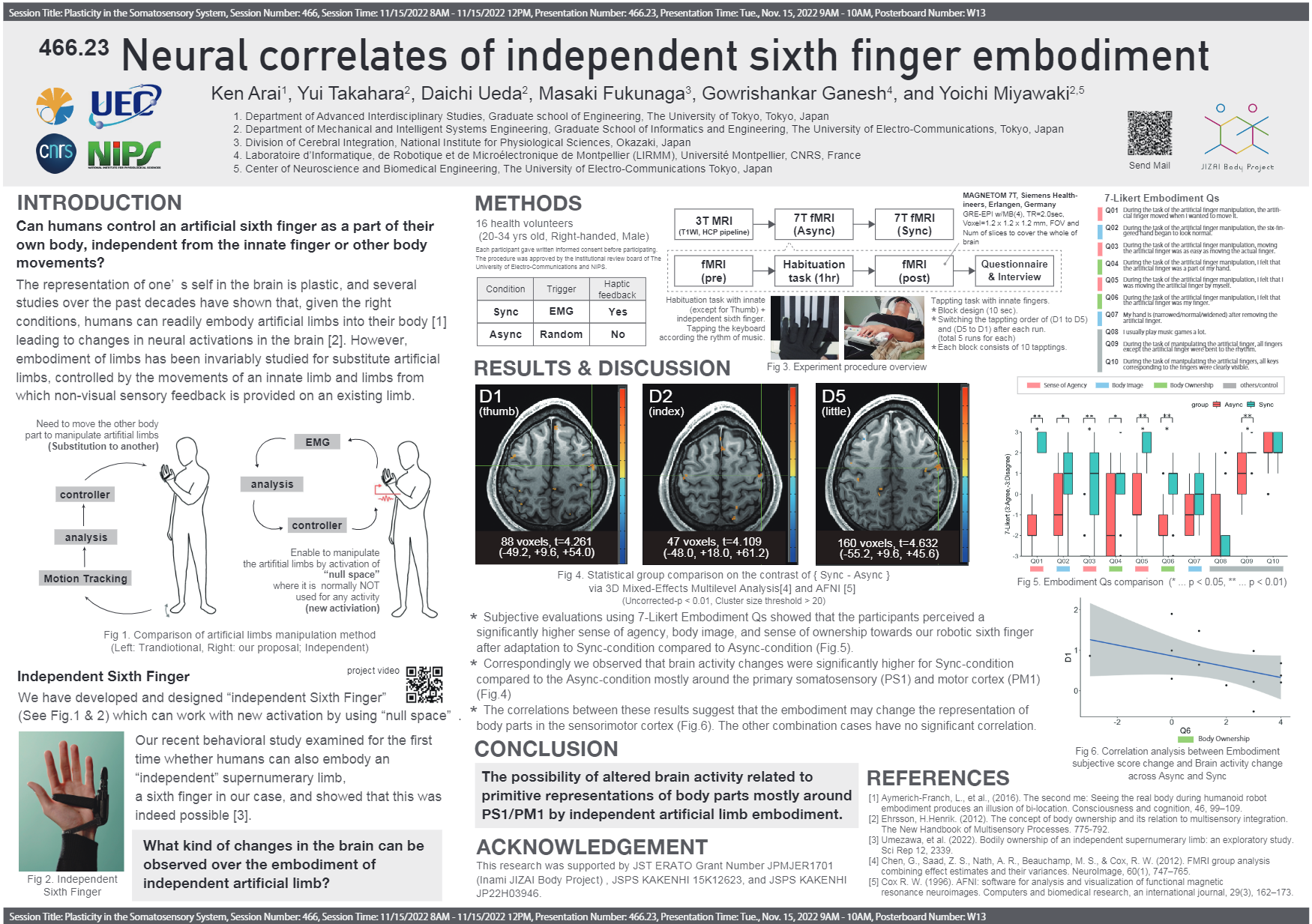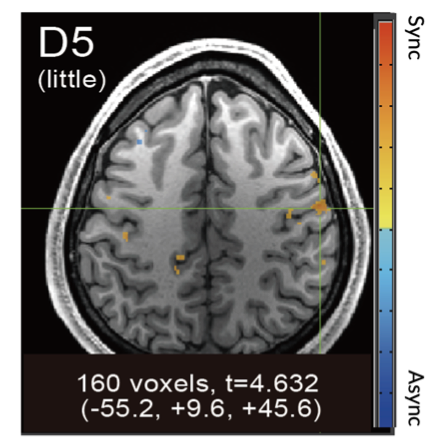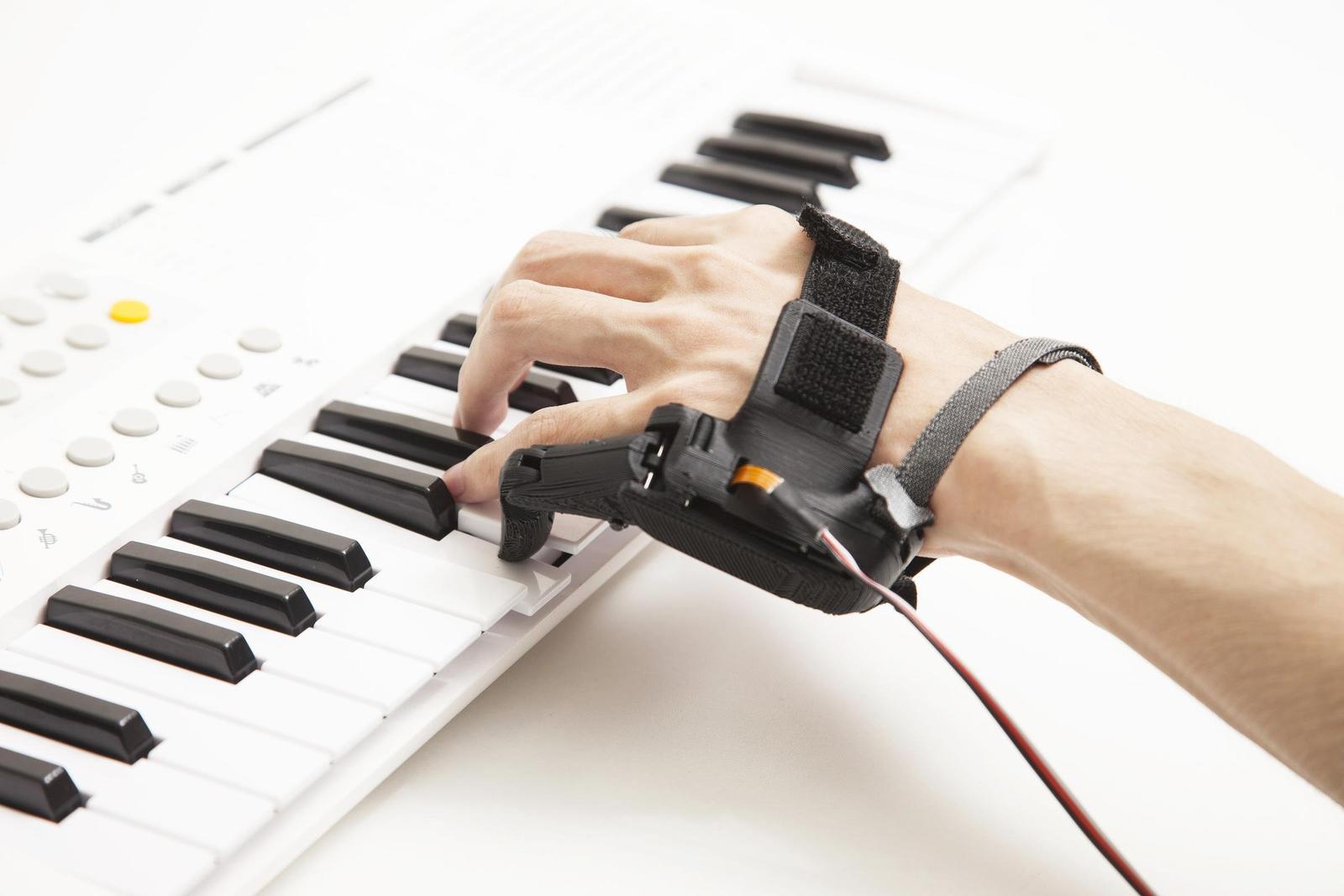Sixth Finger
Can we feel like a part of body to the supernumerary finger actuated by null point?
Embodiment and Neural Representation of an Independent Supernumerary Sixth Finger
This project investigates whether humans can embody and independently control an artificial sixth finger as part of their own body, and how such embodiment is represented in the brain. Unlike traditional prosthetics, which typically substitute for an existing limb or are controlled through movements of innate body parts, our approach enables the control of a supernumerary robotic finger using novel, independent activation patterns.
In our behavioral experiments, participants were able to successfully manipulate the artificial sixth finger independently of their natural fingers, and reported a strong sense of agency and ownership over the supernumerary limb. Subjective evaluations revealed that, under synchronous feedback conditions, participants felt the sixth finger was a natural extension of their own hand (Umezawa et al., 2022).
To explore the neural correlates of this embodiment, we conducted high-field fMRI experiments before and after adaptation to the sixth finger. The results showed significant changes in brain activity within the primary somatosensory and motor cortices specifically associated with the use of the independent finger. These neural changes were closely correlated with increases in subjective embodiment scores, suggesting that the human brain can flexibly reorganize to incorporate new, independently controlled body parts (Arai et al., 2022).
Our findings provide new insights into the plasticity of body representation in the brain, and have important implications for the development of advanced prosthetics and human augmentation technologies.

The other works and contributions can be found in the following citations. (Miyawaki et al., 2022; Takahara et al., 2022; Ueda et al., 2022; Yasuda et al., 2024; Yasuda et al., 2024; Yasuda et al., 2024; Miyawaki-lab, 2022)
References
2024
- Effects of an Embodied Artificial Finger on Body Representation in the BrainIn JNNS2024, Sep 2024
- ICRAThe ’independent’ Sixth Finger ProjectIn IEEE-ICRA2024 workshop : The robotics, psychology and neuroscience of body augmentation, Mar 2024
2022
- Bodily ownership of an independent supernumerary limb: an exploratory studyScientific reports, Oct 2022
- JIZAI Body in the Human Brain: Embodiment of Independent Artificial LimbIn Augmented Humans 2022, Mar 2022
-

